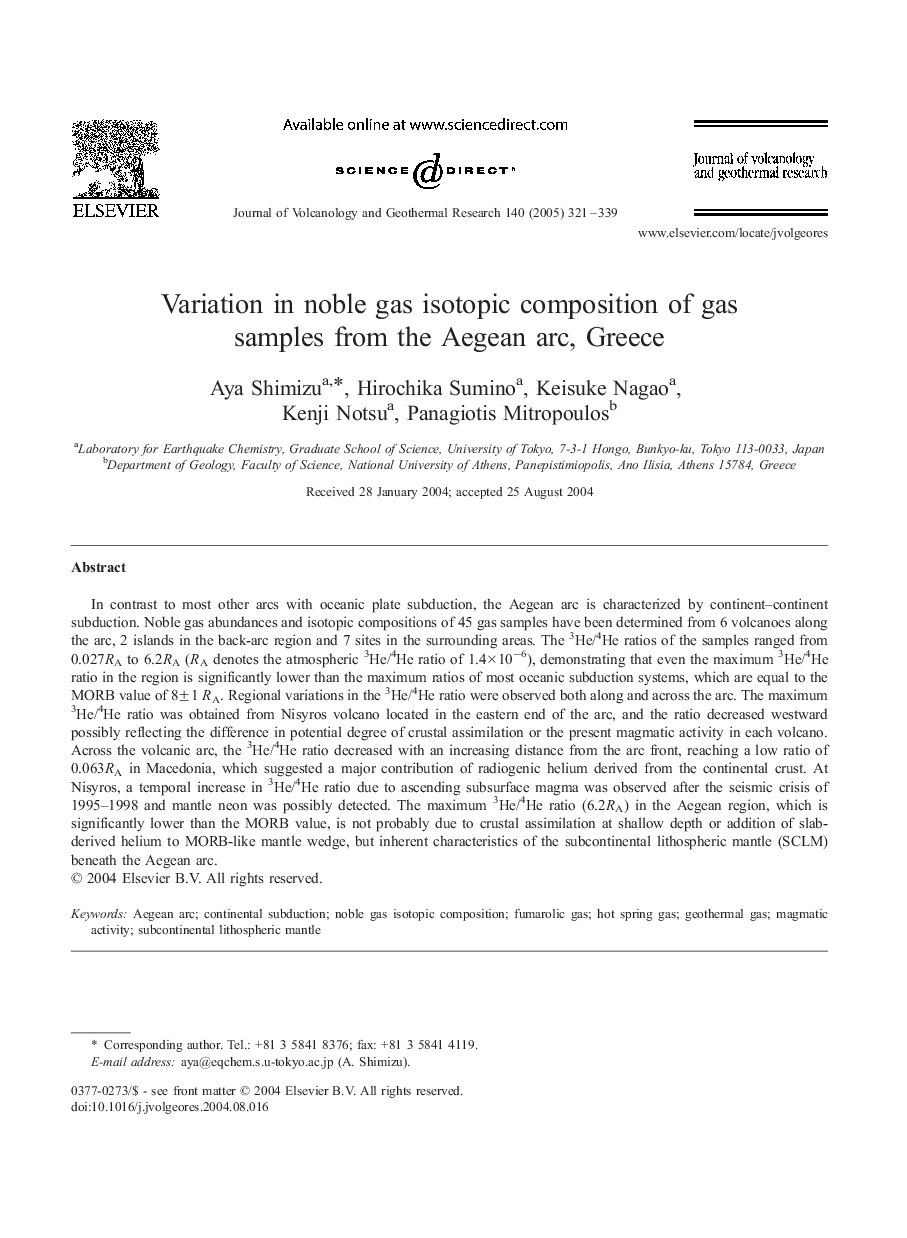| Article ID | Journal | Published Year | Pages | File Type |
|---|---|---|---|---|
| 9531675 | Journal of Volcanology and Geothermal Research | 2005 | 19 Pages |
Abstract
In contrast to most other arcs with oceanic plate subduction, the Aegean arc is characterized by continent-continent subduction. Noble gas abundances and isotopic compositions of 45 gas samples have been determined from 6 volcanoes along the arc, 2 islands in the back-arc region and 7 sites in the surrounding areas. The 3He/4He ratios of the samples ranged from 0.027RA to 6.2RA (RA denotes the atmospheric 3He/4He ratio of 1.4Ã10â6), demonstrating that even the maximum 3He/4He ratio in the region is significantly lower than the maximum ratios of most oceanic subduction systems, which are equal to the MORB value of 8±1 RA. Regional variations in the 3He/4He ratio were observed both along and across the arc. The maximum 3He/4He ratio was obtained from Nisyros volcano located in the eastern end of the arc, and the ratio decreased westward possibly reflecting the difference in potential degree of crustal assimilation or the present magmatic activity in each volcano. Across the volcanic arc, the 3He/4He ratio decreased with an increasing distance from the arc front, reaching a low ratio of 0.063RA in Macedonia, which suggested a major contribution of radiogenic helium derived from the continental crust. At Nisyros, a temporal increase in 3He/4He ratio due to ascending subsurface magma was observed after the seismic crisis of 1995-1998 and mantle neon was possibly detected. The maximum 3He/4He ratio (6.2RA) in the Aegean region, which is significantly lower than the MORB value, is not probably due to crustal assimilation at shallow depth or addition of slab-derived helium to MORB-like mantle wedge, but inherent characteristics of the subcontinental lithospheric mantle (SCLM) beneath the Aegean arc.
Related Topics
Physical Sciences and Engineering
Earth and Planetary Sciences
Geochemistry and Petrology
Authors
Aya Shimizu, Hirochika Sumino, Keisuke Nagao, Kenji Notsu, Panagiotis Mitropoulos,
